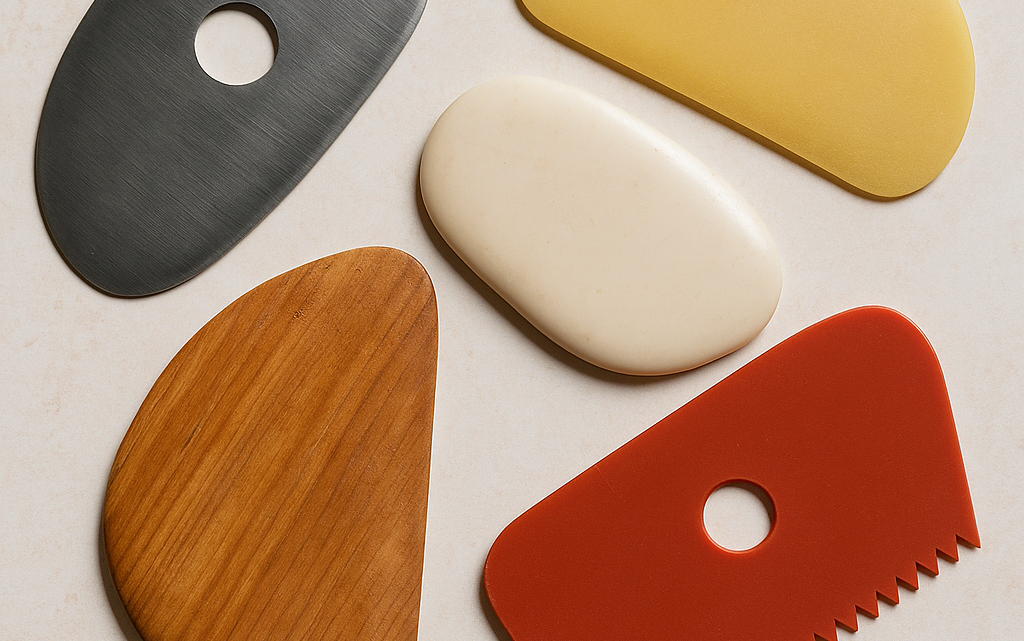
What Is a Potter’s Rib?
The Handy Little Tool With a Surprisingly Ancient Story**
If you’ve ever watched someone shaping clay on a wheel or smoothing the surface of a handbuilt mug, you’ve probably seen a potter reach instinctively for a small, curved tool — almost like a tiny paddle or a bean-shaped scraper. That, my friends, is the potter’s rib, and it has been a potter’s best friend for thousands of years.
But why is it called a rib? And where did this humble tool come from?
Let’s dig in.
Why “Rib”? The Name Is Literal — and Ancient
The term “rib” isn’t poetic or symbolic — it comes from the fact that early ribs were often made from actual animal ribs, usually cow or ox.
Ancient potters discovered that ribs were:
- naturally curved
- smooth and strong
- perfect for shaping the inside walls of pots
- comfortable in the hand
That natural curve made it easy to smooth and compress clay — and the name stuck.
Eventually potters began carving ribs from wood, bone, horn, and later metal, but the original name traveled with the tool all the way into modern studios.
What a Rib Actually Does
If you’ve ever thrown on the wheel, you know the rib is the quiet hero of the process. It does the jobs your hands can’t quite do as efficiently:
✔ Shapes the profile of your pot
Want straighter walls, a tighter curve, or a clean angle? Use a rib.
✔ Smooths the surface
Great for removing throwing lines, refining curves, and preparing for slip or texture.
✔ Compresses clay
A rib helps prevent cracks by compressing the surface as you throw or handbuild.
✔ Controls moisture
Metal and plastic ribs can remove excess water; wooden ribs glide while adding just the right friction.
✔ Adds texture
Some ribs have teeth or serrated edges that create grooved and decorative textures.
This little tool works harder than almost anything else in your toolkit.
Types of Potter’s Ribs (and Why You’d Use Each One)
Potters get very attached to their favorites — and for good reason. Each rib has a personality.
Wooden Ribs
Warm, lightweight, and ideal for shaping soft clay. Perfect for beginners and wheel throwers.
Metal Ribs
Flexible, precise, and great for smoothing or removing water. Excellent for refining shapes.
Plastic or Polymer Ribs
Durable, smooth, and come in every shape imaginable. A great “all purpose” option.
Serrated (Toothed) Ribs
Used to score large surfaces, compress coils, or prepare a pot for joining.
Exotic Ribs (Bamboo, Horn, Silicone)
Each offers a slightly different feel, grip, and flexibility — great for more advanced techniques.
A Rib for Every Potter
Whether you’re throwing a bowl, shaping a handle, or smoothing the belly of a vase, a rib gives you control that fingers alone can’t match. It’s a simple tool, but it connects modern potters to thousands of years of ceramic traditions — all starting with a single curved bone.
Next time you pick one up in the studio, you’re literally holding a piece of pottery history.
